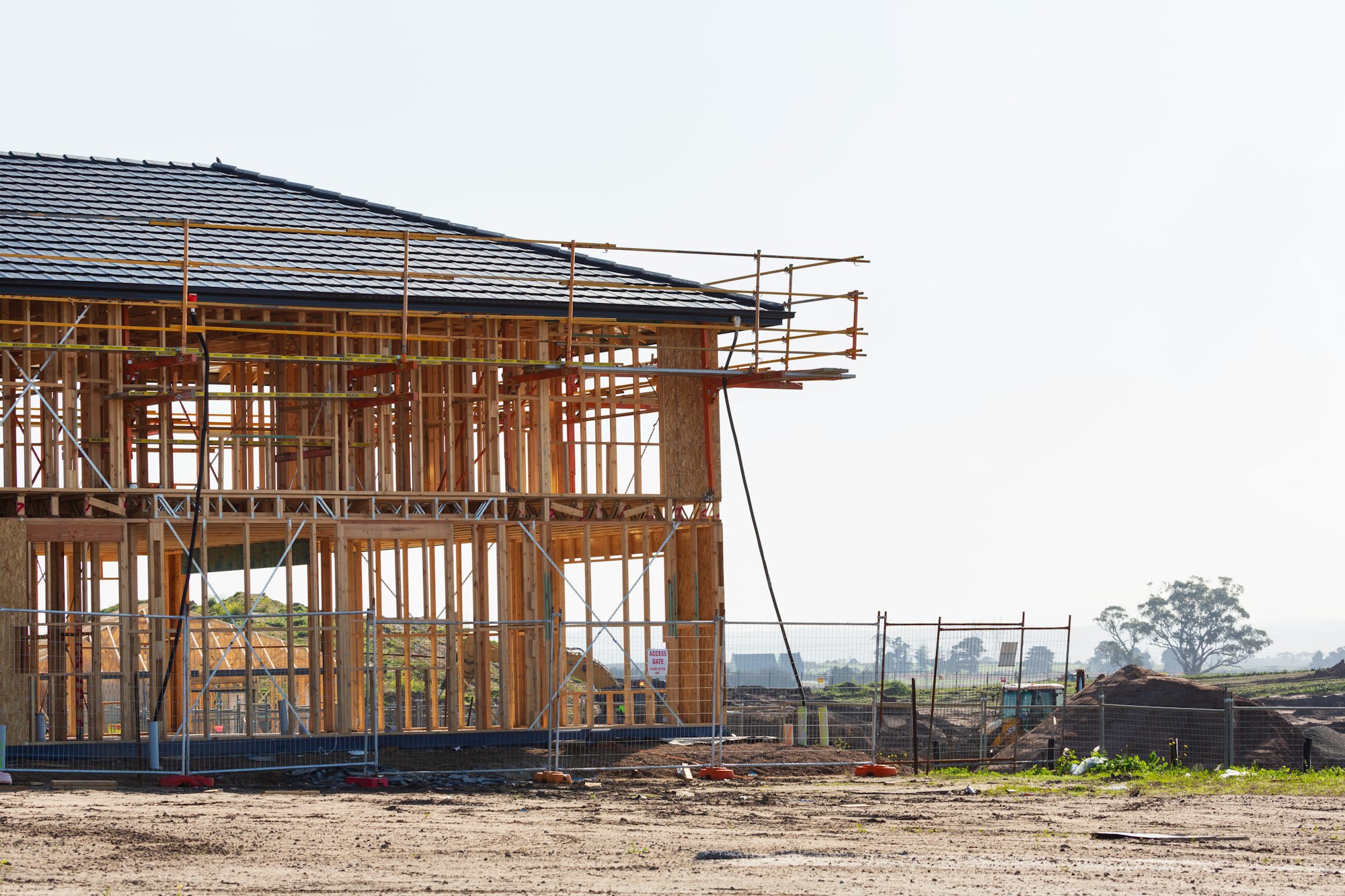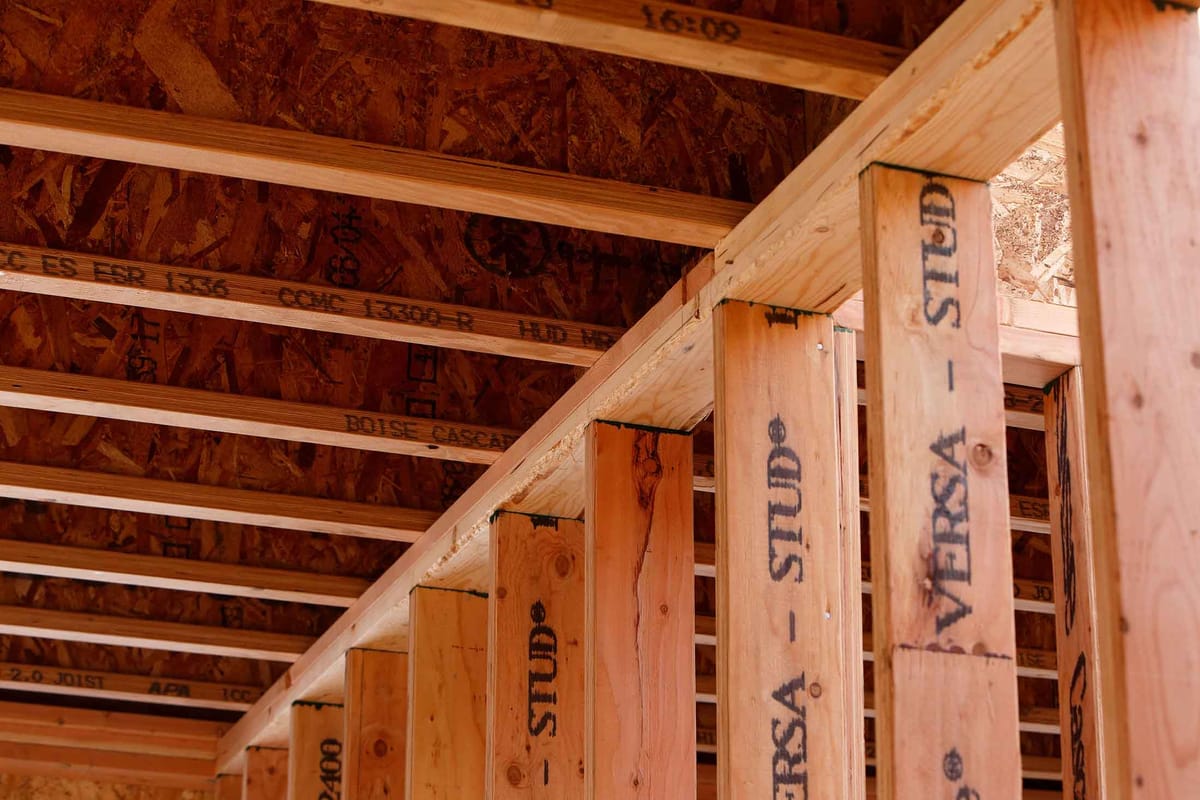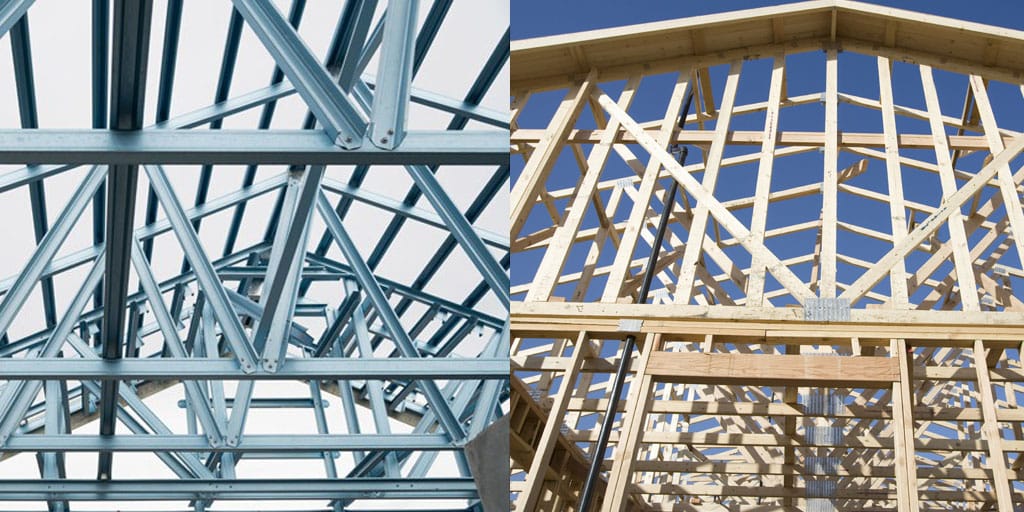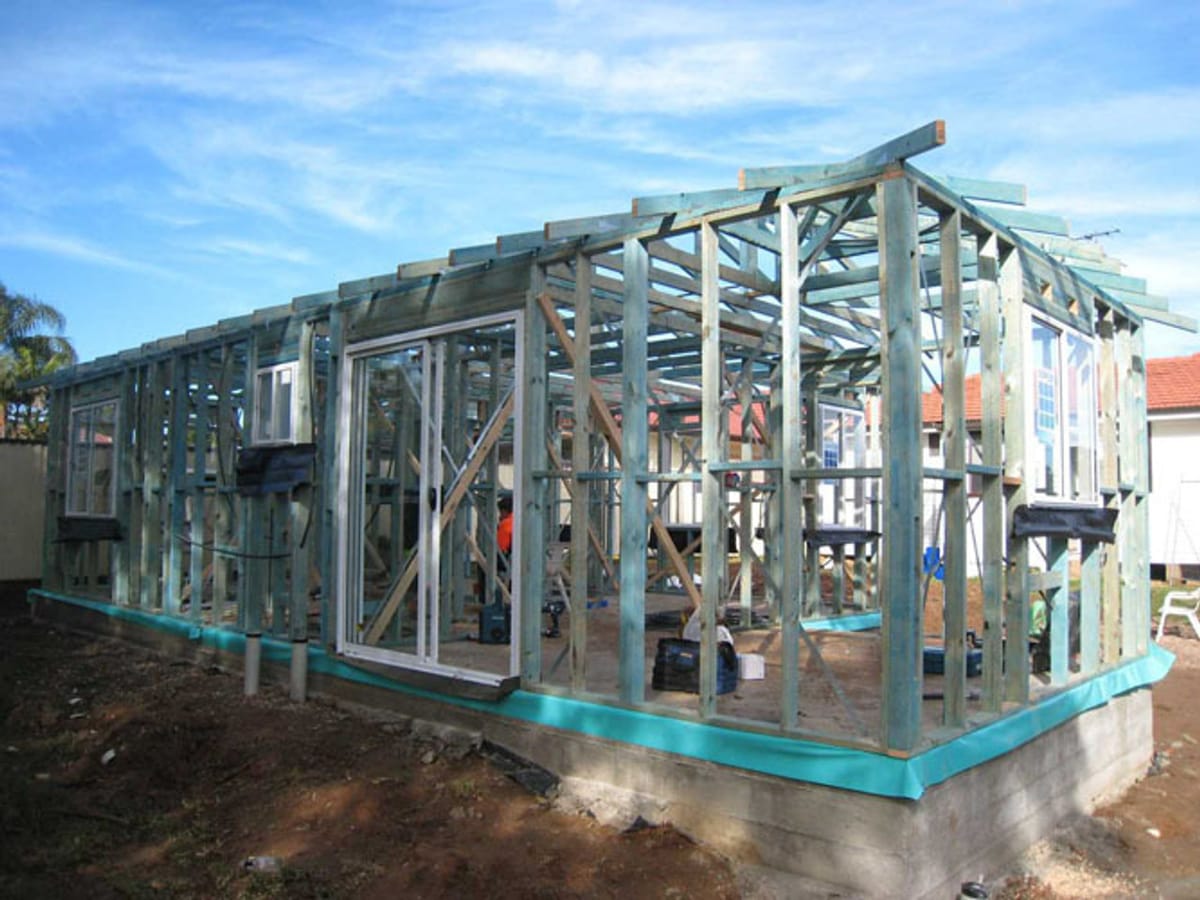1. Introduction: Timber, Trees, and the Truth Behind the Shortage
If you're planning to build a new home in Australia, there's a good chance your builder—or your budget—has already mentioned timber. Maybe it's a delay. Maybe it's a price increase. Porque no los dos?
Maybe it's both.

So what’s really going on?
A new report commissioned by the Australian Climate and Biodiversity Foundation (ACBF) looks into the forest and wood products industry. It looks at how we grow, harvest, mill, and use timber across the country, and what that means for housing, jobs, and climate goals.
Here’s the short version: Australia’s forestry sector is small, but important (mighty but fighty?). Most of the timber used in house construction comes from softwood plantations, not native forests. But those plantations are under pressure—slow to grow, hard to expand, and vulnerable to fire and land-use competition.
The report makes one thing clear: if we want to keep building homes at the pace the country needs, we’ll have to get smarter about how we grow and manage timber.
2. Australia’s Forest and Timber Sector – Small but Mighty? 😄
Let’s start with the big picture: forestry and timber products make up less than half a percent of Australia’s economy. That might sound small—but for something so small, it punches above its weight (mighty).
Why? Because timber plays a foundational role in what we build and how we build it.
- The industry adds about $9 billion in value to the economy each year.
- It supports over 50,000 jobs, with around 20,000 of those in regional areas.
- It provides timber for everything from house frames to furniture, paper, packaging, and firewood.
- Forests themselves offer benefits that go beyond timber: they clean the air, store carbon, support biodiversity, and even fuel tourism and recreation.
Now here’s something that matters if you’re building a home: more than two-thirds of the industry’s economic contribution comes from manufacturing, not logging.
👉️ This includes the processing, milling, and production of timber and paper products. So while the trees start in the forest, most of the value (and most of the jobs) are created once those logs are turned into something useful.
And what about what we use?
Despite our growing population, Australia’s total timber consumption has stayed flat since 2000, and dropped by more than 20% per person. Hardwoods have taken the biggest hit—dropping from half of consumption in the 1970s to less than a quarter today. Meanwhile, softwood consumption has grown slightly in total, but shrunk per capita.
The Bottom line is: even though the forestry industry is a small slice of the economy, it’s super important to housing—and that role is growing, not shrinking.
3. Softwood vs Hardwood: Two Very Different Stories
Not all timber is created equal—and the difference between softwood and hardwood is more than just density.

When it comes to residential construction in Australia, softwood is king. It’s what most house frames are made from. It’s fast-growing, easier to process, and mainly comes from purpose-grown plantations—especially pine species like radiata pine.
Here’s what the report makes clear:
- Softwoods make up around 75% of construction timber.
- They account for about 60% of all domestic wood use.
- And they deliver 70% of the industry’s value-added output.
In other words, softwoods do the heavy lifting for Australia’s housing industry.
Hardwoods, on the other hand, tell a very different story:
- Most hardwoods come from native forests or older plantations.
- Over 90% of hardwood is used in low-value products—think firewood, mulch, pulp, and woodchips.
- These are often exported, not used locally.
- Only a small portion becomes high-value products like floorboards, furniture, or veneers.
Even though those high-value uses are a tiny slice of hardwood volume, they represent about half of the total value generated from native forestry. It’s the classic “a little goes a long way” scenario.
So if you’re wondering why your hardwood flooring is expensive and possibly on back order—it’s because high-grade, local hardwood is limited, and most of our hardwood trees are being chipped or burned instead of milled.
4. Where the Value Lives: Manufacturing, Not Logging
It’s easy to picture forestry as people cutting down trees—but that’s not where the money is made.
According to the report, over 80% of the industry’s value comes from what happens after the tree hits the ground. That means:
- ~65% from manufacturing (turning timber into products like frames, cladding, panels, and paper), and
- ~15% from primary processing (like milling logs into sawn timber).
By contrast, logging—the act of harvesting the tree—accounts for only around 3% of the wholesale margin. In financial terms, logging is a tough business. There’s more profit in turning timber into things people can use.
Softwood sawmills, in particular, have become more efficient over time. They’ve consolidated into fewer, larger operations that run closer to industry best practices. On average, a softwood mill processes over 160,000 cubic metres a year. Compare that to hardwood mills, which only manage about 11,000 cubic metres a year and lag far behind in productivity.
This has knock-on effects. Less efficient hardwood mills:
- struggle to stay profitable,
- can’t compete on price, and
- face closure or consolidation—especially as native logging winds down.
All this adds up to one simple truth: if you want reliable, affordable timber, the smart money is on softwood manufacturing.
5. Declining Harvests and Disappearing Native Logging
Here’s a main point from the report: Australia’s native forest logging is winding down—and it’s not coming back.
According to the report, native forest wood production is in structural decline, and it’s been that way for years:
- Since 2004, production volumes have dropped by about 80%.
- In 2024, Victoria and Western Australia officially ended native logging, further shrinking supply.
Why? A few key reasons:
- Low returns: Government-run logging operations often earn less than 3% return, sometimes even losing money.
- Environmental pressures: Carbon storage, biodiversity, and recreation values are increasingly being prioritised over timber.
- Policy decisions: States are recognising that the long-term economic case for native logging just isn’t stacking up.
Meanwhile, new plantation establishment has stalled, especially for hardwoods. Since 2010:
- Hardwood plantation area has declined by ~30%.
- Softwood area has remained flat, with only a small recent uptick.
Plantation returns aren’t great either. Once you factor in land costs, the average return (IRR) for new plantations is:
- 1–2% for hardwoods,
- 2–3% for softwood sawlogs.
Without added income streams—like carbon credits or government grants—most new plantations simply don’t make financial sense.
So, we’re left with this reality:
- Native hardwood is fading out.
- New plantations aren’t replacing it fast enough.
- And natural disasters like the 2019–20 bushfires have only made things worse—damaging over 130,000 hectares of commercial plantation land.
6. Regional Dependence: The Timber Towns Behind the Supply
While most of the timber industry's value is in manufacturing, the heart of the workforce is regional Australia—especially in logging and milling.
Here’s what the report found:
- Roughly 51,000 people are employed across the forestry and wood products sector.
- About 65% of these jobs are in downstream manufacturing (things like paper and timber products).
- But in native forestry, the story flips—most jobs are in logging and milling, not manufacturing.
And these jobs aren’t spread evenly across the country. Instead, they’re highly concentrated in about 60–75 communities, where timber work accounts for over 1% of total employment.
That matters—because:
- These are often lower-income areas.
- Many workers are “highly dependent” on forestry—meaning they don’t have easy alternative job options nearby.
- If native logging winds down (as we’re already seeing), these workers and towns face tough transitions.
To be fair, around 80% of the broader industry workforce could likely shift into similar roles locally. But for logging and milling workers, that number drops to around 60%—leaving a significant portion of workers exposed if the industry contracts further.
It’s not just a supply chain issue. It’s a social one too.
7. Demand vs Supply: Can We Keep Up with Construction Needs?
Here’s the million-dollar question for home builders: is there enough timber to go around?
The short answer: not right now, and maybe not later either—unless we plan carefully.
The report discusses three possible future scenarios for housing demand, based on population growth, household size, and the mix of houses vs apartments:
- Surging Suburbia – High population growth, mostly standalone homes.
- Urban Growth – Moderate growth with a mix of apartments and houses.
- 👉️ Small is Beautiful – Slower growth, more compact housing (what we're currently seeing play out).
Depending on which path we follow, Australia could need anywhere from 100,000 to 225,000 new dwellings per year by 2060. The higher end of that is more than we’ve ever consistently built before.
Here’s the big challenge:
- Most of that housing demand relies on softwood timber.
- Our current plantations and mills can supply timber for around 180,000 to 200,000 homes per year—at best.
- But in the short term (i.e. the next 5 years), demand is peaking as we try to catch up from years of under building.
- That means timber shortages are already happening, and the system is under stress.
Expanding supply isn’t as easy as it sounds:
- Plantations take decades to mature—so even if we start now, they won’t help in the short term.
- Mills are cautious about expanding in case the demand boom doesn’t last.
- 👉️ That means we’ll likely see increased reliance on imports to plug the gap—especially for structural softwoods.
- Soon, we'll post on LVL (laminated veneer lumber), CLT (cross laminated timber), GLT (glue laminated timber) strengths, weaknesses, and uses cases. Stay tuned.
Some local sawmills already have excess capacity (not enough logs to run full tilt), while some logs don’t have mills nearby to process them. So even if we have the trees, logistics and location matter.
8. Not All Gloom: The Case for Plantation Softwoods
Amid all the pressure on timber supply, there’s at least one positive trend: plantation softwoods are making a slow comeback.
After more than a decade of flat lining, 2023 saw a small uptick in new plantation activity, especially for softwood species. What’s driving this shift?
A few key factors:
- Government grants are being used to support new plantations and mill upgrades.
- Carbon credits (ACCUs) are starting to make timber more financially attractive—especially when they generate revenue early in the plantation lifecycle.
- Confidence is returning, even if the economics still aren’t perfect.
In fact, in some cases, the report suggests carbon revenue could double the return on a plantation investment, turning a low-margin gamble into something actually viable.
That’s good news, especially given the long lead times. Trees planted today won’t be harvested for at least 25–30 years. So any momentum now is important if we want to meet construction demand in the 2040s and beyond.
Of course, there are still risks:
- Bushfires, like those in 2019–20, damaged over 130,000 hectares of plantation land.
- High land prices make it hard to justify plantation investment, especially for hardwoods.
- Permanent carbon forests (which don’t get harvested) might become more attractive than production forestry, further reducing log supply down the line.
But even with all that, the signs are cautiously optimistic. If we support the right policies—and continue to value timber as both a construction material and a climate solution—plantation softwoods could be the long-term fix we need.
9. The Climate Connection: Carbon, Biodiversity, and Competing Land Uses
It’s no longer just about cutting down trees for timber. Forests now play a much bigger role—in climate policy, biodiversity protection, and carbon trading.
One of the biggest shifts happening right now is the recognition that leaving forests standing can be more valuable than logging them.
The report highlights how:
- New carbon credit methods—like the Improved Native Forest Management (INFM) method—let states earn ACCU revenue by ending native forest logging.
- This could mean up to 43.5 million carbon credits, about $2 billion in net revenue, and still support 600+ jobs through alternative forest management.
- Preserved forests contribute to carbon sequestration, protect biodiversity, and support tourism and recreation.
While carbon forests bring environmental value, they compete for land with production forestry (the kind that supplies timber). If prices for carbon credits keep rising—as expected under Australia’s Safeguard Mechanism—we could see more landowners opt for permanent carbon planting instead of growing timber that can be harvested.
That’s not a bad thing for the planet—but it does mean less timber in the long run. And fewer plantations mean more reliance on imports, and potentially higher costs for builders and homeowners.
It’s a balancing act: climate, housing, jobs, and nature all pulling in different directions.
10. Coordinated Policy Is the Only Way Forward
If there’s one key takeaway from the report, it’s this: we can’t keep managing forestry in silos.
Timber isn’t just about house frames. Forestry policy touches housing affordability, regional jobs, climate targets, biodiversity, and even carbon credit markets. And without coordination, we risk creating bigger problems down the line—like timber shortages, mill closures, job losses, or stranded investments.
Here’s what the report suggests needs to happen:
- Short-term solutions: Reliance on imports is unavoidable in the next few years. But 👉️ we need to manage this carefully so we’re not caught flat-footed by price hikes or overseas supply chain issues.
- Medium-term planning: Get serious about mill upgrades, softwood plantation expansion, and land-use planning so supply chains are better matched to regional demand.
- Long-term strategy: Support carbon forestry and biodiversity goals, but not at the expense of construction timber availability. Create incentives that balance preservation and production.
That means all levels of government need to work together—with industry, landowners, and communities. Otherwise, we’ll keep flip-flopping between too much demand and too little supply. Let's see how that plays out now.
The forestry sector isn’t just a resource industry anymore. It’s part of the solution to housing, climate change, regional inequality, and sustainable development.
But only if we treat it that way.
11. Final Thoughts: What You Need to Know
So, what does all this mean if you're just trying to build a house?
Here’s the consolidated version:
- Softwood timber is the backbone of Australian home building—but supply is under pressure.
- Native hardwood is fading fast, and most of what’s left gets exported or chipped.
- Short-term timber shortages are likely, especially if you're building soon.
- Long-term solutions—like softwood plantations and mill upgrades—are in motion, but they take decades to deliver.
- Carbon credits and biodiversity goals are reshaping how we use forest land, for better or worse.
If you’re a homeowner or about to be one, you don’t need to know every detail about ACCU pricing or sawmill productivity. But you should understand this:
👉 Timber is no longer cheap, infinite, or guaranteed to be local.
👉 Your building schedule and budget might depend on what happens in a forest—or a boardroom—hundreds of kilometres away.
That’s why it pays to ask the right questions:
- Where’s your timber coming from?
- What happens if there's a delay or a price jump?
- Is your builder sourcing responsibly—and realistically?
Because when supply gets tight, it’s the people building homes who feel it first.
✅ FAQ Section
1. Why is there a timber shortage in Australia?
Because demand for new homes is peaking and our local softwood plantations and sawmills can’t keep up—especially in the short term. Native hardwood supply is also in steep decline.
2. What’s the difference between softwood and hardwood?
Softwood (like pine) is used for structural framing and is mostly grown in plantations. Hardwood (like spotted gum) is denser and often used for flooring or furniture, but most of it ends up as low-value exports like wood chips.
3. Why has native forest logging been reduced?
Native logging has become economically non-viable, especially compared to the carbon and biodiversity value of preserving forests. Victoria and WA ended it in 2024, and other states may follow.
4. Are timber prices going to keep rising?
Possibly. Short-term shortages and increasing reliance on imports could keep prices high. Long-term trends will depend on plantation investment and mill capacity.
5. Will imported timber fix the problem?
Imports help, but they come with risks—shipping delays, foreign demand spikes, and higher prices. Australia can’t rely on imports forever without local investment.
6. Is there enough timber for Australia’s housing needs long-term?
Only if we expand plantations, upgrade mills, and plan well. Without coordination, high-demand scenarios could lead to chronic shortages.
7. How do carbon credits impact timber supply?
They improve the economics of plantation investment but can also compete with timber production if landowners choose to plant permanent carbon forests instead.
8. Are high timber use jobs disappearing?
Not across the board—but logging and milling jobs in native forestry are shrinking, especially in regional communities with limited alternatives.
9. What should I ask my builder about timber?
Ask where they source their timber, whether delays are expected, and if their supply includes imported materials. It’s better to know upfront than mid-build.
10. Can sustainable forestry support both housing and the environment?
Yes, but it requires coordinated policy—balancing housing demand, climate targets, and biodiversity. Without that balance, we risk undermining all three.
Further Reading






Get close an personal with your framing stage with our quality management checklist covering both design and site inspection considerations.












